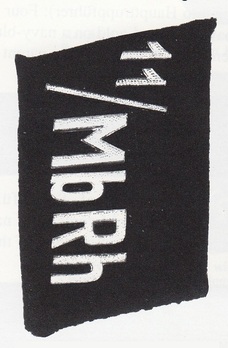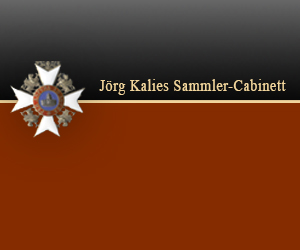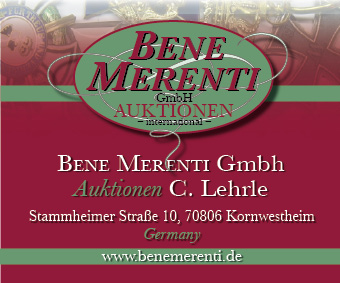NSKK Naval Sturm Collar Tabs (Sturm 11 Standarte Rhein version)
CATEGORY: Version
SKU: 53.GOR.03.02.02.02.03.004.001
Estimated market value:


Estimated market value:
The NSKK (Nationalsozialistisches Kraftfahr-Korps = National Socialist Motor Corps) was a paramilitary organisation affiliated with the NSDAP, specialising in anything related to the driving of motorised vehicles. NSDAP officials recognised the need for access to cars and trucks for both transportation and propaganda purposes as early as 1922, and certain steps were taken to ensure this need was met. However, it took until April of 1930 for a specialised motor organisation to be officially founded. This organisation was named NSAK (Nationalsozialistisches Automobil-Korps = National Socialist Automobile Corps), but was renamed to NSKK less than 13 months later.
Initially, the NSAK/NSKK was under the control of the SA and existed next to its parent organisation’s own driving-related sub-organisation, the Motor-SA. This changed after the “Night of the Long Knives”, in which many SA leaders were purged and the organisation was substantially disempowered. After July of 1934, the NSKK became an independent organisation whose leader, NSKK-Korpsführer Adolf Hühnlein, answered directly to Adolf Hitler.
The main tasks of the NSKK were to provide transportation for all organisations of the Third Reich, to train and instruct boys and men (and a number of women) in mechanics and driving, and to assist police in regulating traffic. During the mid 1930s, the organisation also provided roadside assistance.
With the onset of the war, the NSKK’s tasks underwent certain changes. Instructing both civilians and soldiers in the driving and maintenance of armored vehicles became a higher priority. The NSKK also began working closely with other organisations, for example Organisation Todt (OT), by providing transportation of workers and supplies for the colossal building project that was the fortification of Germany’s Western border, the Siegfried Line (or Westwall). During the war, the NSKK provided much of the transportation needs for the German Army and the Luftwaffe, including the transport of troops, weapons and ammunition, and building materials, for example for the construction of air bases in the newly conquered territories in Eastern Europe after the attack on Soviet Russia in the summer of 1941.
Parts of the NSKK would come under the control of architect Albert Speer who took over OT after the death of Fritz Todt in 1942, leading to the creation of Transport Brigade Speer (later Transport Corps Speer), which would eventually completely sever its ties to the NSKK.
Collar tabs of NSKK motorboat units are similar to those of other NSKK units, but feature gold-coloured rather than silver-coloured letters and numbers.
Collar tabs of ranks of Staffelführer and above feature gold-coloured twist cord piping.
A Standarte collar tab features the Standarte number in Arabic numerals, preceded by the letters "Kb" (for Kraftboot, motor boat). This was later changed to "Mb" (for Motorboot).
An Independent Standarte collar tab features the Standarte number in Roman numerals, preceded by the letters "Kb" (later "Mb"). In certain cases, the location name was used rather than a number.
A Staffel collar tab features the Staffel number in Roman numerals, followed by a slash, followed by "Kb" (later "Mb") and the Standarte number in Arabic numerals.
A Sturm collar tab features the Sturm number in Arabic numerals, followed by a slash, followed by "Kb" (later "Mb") and the Standarte number in Arabic numerals.

Comments
Sign in to comment and reply.


Scroll Top